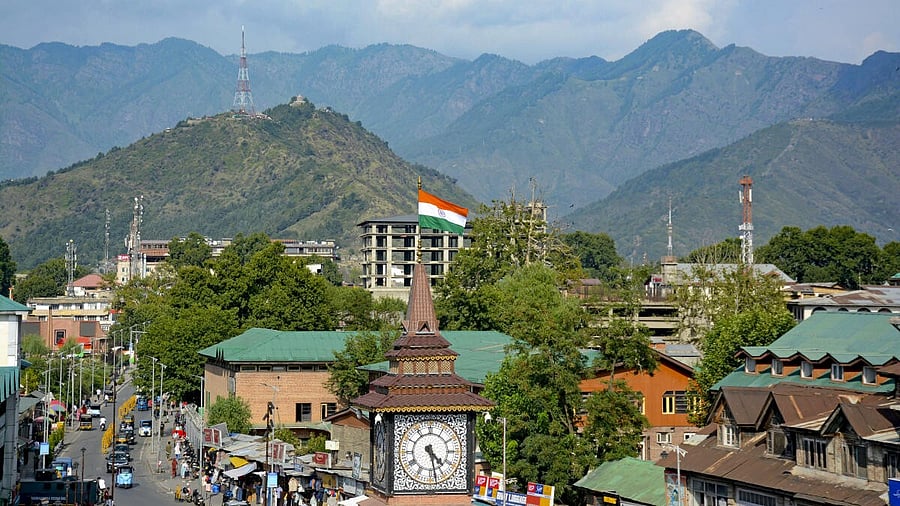
A view of the Ghanta Ghar, clock tower, with the backdrop of Zabarwan mountain range, at the Lal Chowk, in Srinagar, Jammu and Kashmir, Wednesday, Aug. 13, 2025.
Credit: PTI Photo
Srinagar: From a time when hoisting the Tiranga in Srinagar meant braving militant threats and deserted streets to today when it flutters from every government building, Kashmir’s flag story has transformed from a perilous political move to an everyday official routine.
One of the most symbolic moments in this long journey came on January 26, 1992, when then BJP president Murli Manohar Joshi defied militant threats to hoist the national flag at Clock Tower in city center Lal Chowk in Srinagar.
Militancy was at its peak, the city was under lockdown and security forces had thrown a multi-layered cordon around Lal Chowk. Accompanied by then Gujarat BJP leader and now Prime Minister Narendra Modi, Joshi marched into the deserted, heavily guarded heart of Srinagar and unfurled the Tiranga in a brief ceremony.
The image — of the flag rising against a backdrop of fear and empty streets — became a powerful symbol in BJP’s political narrative, even if, for years, it remained a rare act rather than a regular occurrence.
At that time, the idea of the national flag flying across the Valley without massive security or political theatre was unimaginable. The 1992 event remained a rare and controversial flashpoint for decades, often recalled in BJP’s political messaging on Kashmir.
Fast forward three decades, the scene has completely changed. On every August 15 and January 26, the tricolour is now hoisted without incident at every government office, school, and public institution in Jammu and Kashmir.
Public participation in ‘Har Ghar Tiranga’ campaigns has also grown, with rallies, bike parades, and school events displaying the flag openly on the streets. While some analysts see this as a sign of normalisation post the abrogation of Article 370 in August 2019, others argue that the change reflects a combination of tighter security control, political assertiveness from New Delhi, and state-driven symbolism.
The shift is particularly striking in light of statements made before 2019. Just months before the abrogation of Article 370, former Chief Minister and PDP president Mehbooba Mufti had warned that “there will be no one in Jammu and Kashmir to hold the tricolour” if the special status was revoked. The ground reality today is a direct contrast to that prediction.
For the government, the proliferation of the Tiranga is framed as a marker of integration, peace and progress. “The skies of Jammu and Kashmir are shining with the tricolor. From the banks of the Jhelum to the Chenab and from the peaks of Pir Panjal to Harmukh, the echo of “Bharat Mata Ki Jai” can be heard everywhere. A new generation is rising, dedicated to the honour and glory of the tricolor,” J&K Lieutenant Governor Manoj Sinha said.
However, political observers caution that while the flag’s visibility has increased, it does not necessarily mean the Valley’s complex political sentiments have been resolved. “Symbolism is important, but it’s not the same as reconciliation,” said a Srinagar-based political analyst.
Still, for many, the contrast between the perilous 1992 unfurling at Lal Chowk and the ubiquitous tricolours of today is striking. What was once guarded like a state secret is now carried in public rallies, worn on lapels, and draped over shop fronts.